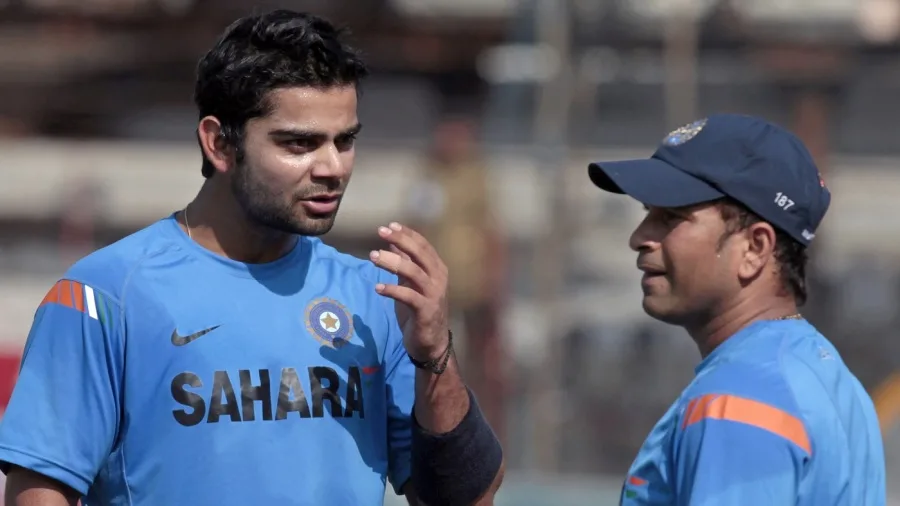

After India’s unceremonious exit from the World Cup in March 2007, former Australian skipper Ian Chappell wrote a scathing piece ripping apart the batting maestro Sachin Tendulkar. “Before anybody else makes a decision on what will happen to Tendulkar the player himself has to have a good long look in the mirror and decide what he’s trying to achieve in the game. At the moment he looks like a player trying to eke out a career; build on a glittering array of statistics.”
At that point in his career, aged 34, Sachin was at a crossroads. Beset by a string of injuries, he looked like a cricketer who was past his prime. His record between 2005 to March 2007 was a not a patch on the exalted standards he had set for himself. The talks about his impending retirement or possible axe were abound in cricketing circles.
However, the maestro didn’t get bogged down. He went to the drawing board, cleared the cobwebs in his head, recalibrated his game, worked diligently on his fitness and went on to reassert his dominance with the bat in all forms of the game. From April 2007 to March 2011, Sachin notched up 4024 runs in 42 Tests at an astounding average of 63.87. He also scored 16 Test tons – the most by any batsman during that period. Even in the ODIs, he performed creditably by scoring 3246 runs at 51.52, with 7 hundreds in tow.
In the process, he helped India win a slew of important series both in Tests as well as ODIs. By dint of his sparkling performances, India won the ODI tri-series for the first time in Australia in 2008, Compaq Cup in 2009 and biggest of them all World Cup in 2011. Sachin came good in all these tournaments and contributed enormously. In fact, in 2010, he became the first batsman to thump a double ton in the ODIs. His spectacular showing in Test series in South Africa in 2010 helped the team to draw the series for the first time in that country.
Clearly, when the chips were down and daggers were out, Sachin 2.0 stamped his authority in no uncertain terms. He was already a great batsman by 2007, but what he achieved in the next four years enhanced his stature manifold.
In 2022, his cricketing successor Virat Kohli finds himself in the same spot. He has been in the throes of many controversies of late. His public spat with the BCCI president Sourav Ganguly, alleged rift with Rohit Sharma, patchy form and stepping down from the captaincy have made news for all the wrong reasons. Someone who has played cricket with incendiary intensity and no-holds-barred belligerence, the recent turn of events have clearly affected him. There are murmurs that he seems to have lost his touch and his best days are behind him.
Like Sachin was in 2007, Virat is already one of the greatest batsmen India have ever produced. His stellar record in last 10 years across formats is a testimony to his undisputed greatness. Though as a captain, he failed to win any major ICC tournament in any format, the overall record is outstanding. But does he still have the fire in the belly to kick on and upgrade his already-excellent record?
One of the most striking features about Virat the cricketer has been his gargantuan appetite and drive to succeed. He has never been the one, unlike many of his contemporaries, who is too easily content with his achievements or someone who smugly rest upon his laurels. He was astonishingly consistent from 2012 to 2019 and the law of averages had to catch him up at some stage. That has happened in a last couple of years.
But now that he’s no longer encumbered with the onus of captaincy, he has all the time in the world to work on his game and iron out minor glitches, which creep in when someone plays for such a long time, that have troubled him since the turn of 2020. Most importantly, he can now completely focus on his batting. Fitness has been one of his biggest strengths and coupled with his sublime skills, there is no reason why he can’t replicate what Sachin did in his new avatar post 2007.
At present, Indian cricket is in exciting phase. There are a host of prodigiously talented youngsters who are jostling to cement their place in the team. They need a mentor who can guide them through the labyrinth and help them fulfill their potential. With such a large talent pool to tap into, it is imperative for the senior players and the management to make excellent use of it.
During his twilight years, Sachin not only performed out of his skin, but he also nurtured a lot of youngsters including Virat. His presence lifted the morale of his teammates and he generously shared his inputs which stemmed from his vast experience.
India is slated to play World T20 and 50-over World Cup in the next two years. Then, there is also the on-going Test championship. The need of the hour for Virat is to reinvent himself and become the pivot around which the rest of the batting revolves. Most of the youngsters that are coming through the ranks look up to him as a role model and harbour aspirations to emulate him.
If he can manage to pass on his experience, work ethics and inputs to youngsters, along with recapturing his old mojo, India will continue to dominate the cricketing landscape for many years to come. And, of course, his place in the pantheon of all-time greats will be more firmly ensconced.
Recently, Virat said, “You don’t need to be a captain to be a leader.” Touche!